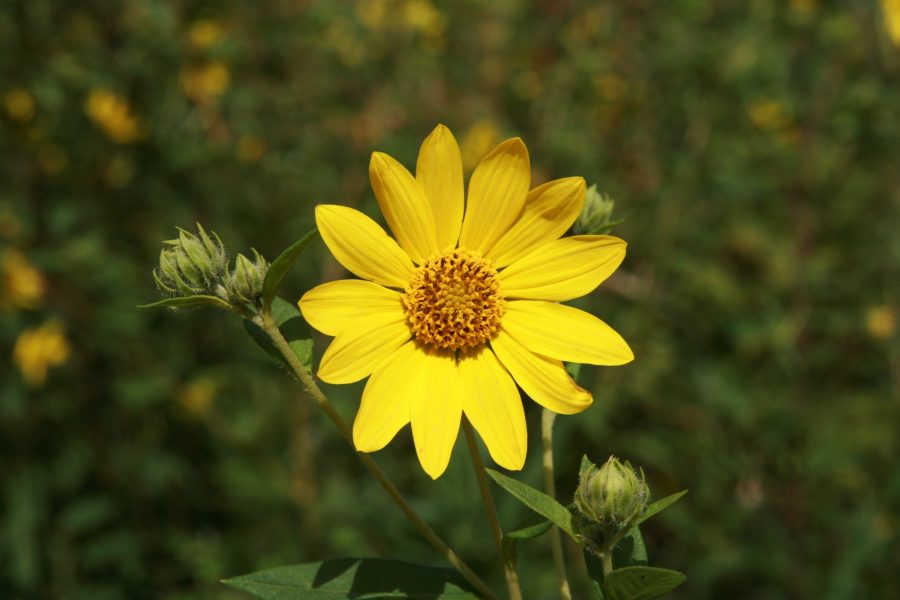Continuing Education Hours: Claim 2.5 hours if you watch the videos, do the reading and complete the practice exercises.
As a gardener, you spend the growing season caring for your plants. As the growing season approaches an end, it’s time to start thinking about caring for them throughout winter… but let’s not forget an important part of our garden ecosystems: the pollinators! What you do to prepare gardens for winter can also help support pollinator populations.
This Plants Plus focuses on protecting your gardens, ornamental plants and trees for winter. It also focuses on how to balance fall clean-up with protecting pollinators.
You’ll learn to:
- Identify activities to prepare your landscape plants for winter.
- Identify methods to protect woody ornamentals from wildlife over the winter.
- Identify methods to support pollinators over the winter.
PROTECTING GARDENS AND PLANTS
Watch these two videos and read the publication to learn about preparing your garden for winter and protecting your trees and shrubs from wildlife.
Video 1:
- Video presented by Lisa Johnson, Horticulture Educator, Extension Dane County
- Video segment is ~30 minutes long.
Video 2
- Video presented by Diana Alfuth, retired Horticulture Outreach Specialist, Extension Pierce and St Croix Counties
- Video segment is ~30 minutes long.
Publication to Read
Read “How to Protect Trees and Shrubs from Animal Damage Over Winter” from Iowa State University Extension.
PROTECTING POLLINATORS
Read and watch to learn about how your fall clean-up practices (in preparation for winter) can take into account pollinator protection.
- Nesting & Overwintering Habitat for Pollinators and Other Beneficial Insects, Xerces Society for Invertebrate Conservation. The Xerces Society is a recommended resource on the Wisconsin Pollinators website. It’s listed as a “go-to resource” for pollinator conservation!
This video contains a good illustration of some of the practices listed in the reading.
- Presented by Julie Weisenhorn, University of Minnesota Extension educator
- Video is ~7 minutes long.
PRACTICE
Practice what you learned below. Complete the matching activity and answer the quiz question to finish the module.
Instructions for Matching Activity: There are many things you can do to prepare and protect a garden for winter. You can also practice strategies to protect pollinators! Identify which practices below prepare or protect a garden from winter and which practices protect pollinators.
Drag the little bee icons onto the squares that protect pollinators. Drag the little leaf icons onto the squares that prepare/protect gardens for winter. Click “Check” to check your answers.
Complete the Quiz: To wrap up, take this short quiz. The quiz question offers you the chance to apply what you’ve learned to your own specific gardening situation. Some of these practices may seem contradictory, such as the example of brush piles. What do you do if you want to protect your gardens from wildlife damage but you’re also concerned about protecting pollinators? Do you leave the brush pile or remove it?
The answer: it depends on your situation. Perhaps you have had extensive wildlife damage and removing a brush pile is the best option for your situation. Can you find other pollinator-friendly practices to adopt? Take some time to consider your own gardening situation and what practices you may wish to start to protect plants and pollinators over the winter.
Please note: Removal and proper disposal of diseased plant tissue is always a recommended fall clean-up practice. Even if you choose to “leave the leaves”, you want to make sure you’re not leaving plant material behind that can harbor disease.
Report your continuing education hours in the Online Reporting System.

 Spotted Lanternfly
Spotted Lanternfly Tree Roots
Tree Roots Gardening & Climate Change: What You Can Do
Gardening & Climate Change: What You Can Do


